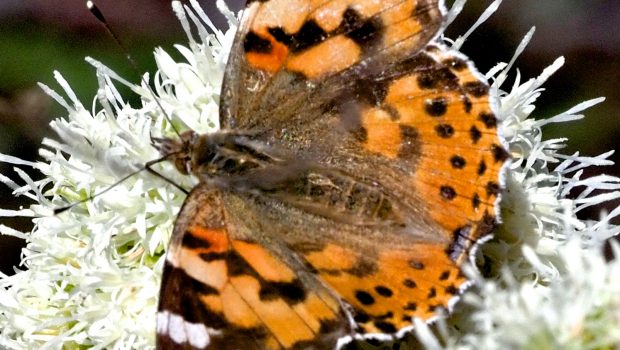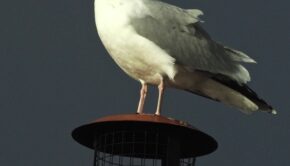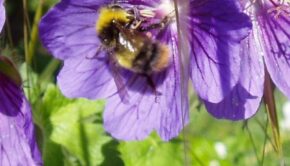Local Nature: The Fast Lady
On a recent walk I was pleased to see my first Painted Lady butterfly of the year in the UK. It was not the best of specimens; rather tatty. It had lost most of its colour and was looking pretty tired, as though it had been on a long, demanding journey – and it probably had. Painted Ladies are one of the world’s great migrant species making annual mass movements that in some years sees millions arrive on our shores. I wondered if this one butterfly could have been part of the millions I had seen on a trip to Georgia in early May. There for ten days on a bird watching trip, Painted Ladies were heading north every day in huge numbers on fast, purposeful wings.
On a mountain pass with snow on the high peaks, these amazing butterflies were speeding close by us at the rate of three or four a minute. It would be impossible to count the number of individuals involved in this vast northwards movement across Eastern Europe.
The butterflies that reach the UK are likely to take a more westerly route, leaving hot dry areas in Arabia and northern Africa to find cooler, greener places to breed. They can go through complete life-cycles en route from egg to butterfly and the numbers multiply as a consequence as the swarm rolls northwards. Some will get as far as the Arctic Circle; the painted Lady is the only butterfly ever noted in Iceland. The caterpillars cannot endure cold winters so for years what happened in the autumn remained a mystery as the butterflies were rarely seen going back south again. Recent research using special radar tells scientists that there is indeed a mass return migration; it occurs at altitude, out of sight once there are favourable winds. Records show that an estimated 21 million migrated south in the autumn of 2009, a bumper year here for the species.
Painted Ladies can be seen in a variety of habitats including gardens and open fields. They are very fond of feeding on thistles and being large, active insects they are hard to miss. Experts are beginning to predict that 2019 may be another bumper year when we may see them in their thousands again. That one tatty individual I saw in June perhaps a hint of wonders to come.
House Martin






Comments